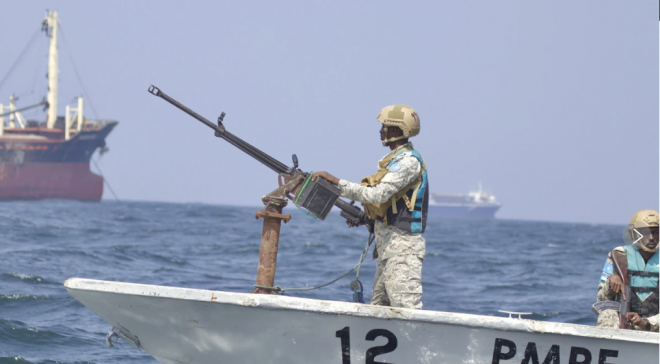Somalia: Drought conditions continue to persist in parts of Puntland
GAROWE, Puntland - In 2016-2017, Somalia faced a devastating drought which put the lives of millions into risk. This led to water scarcity, depletion of pasture, widespread food insecurity and livestock mortality.
By the end of 2016 and most of 2017, erratic rainfall in Sanaag Region resulted in insufficient water that led to a sharp increase in the prices of water.
The urban population grew significantly, partly due to the increased number of internally displaced persons who lost their pastoral livelihoods during the drought.
In 2018, a new set of challenges continues to affect residents of Badhan district as drought conditions persist in most parts of Sanaag region.
The April to June Gu rainfall started earlier than normal and was significantly above average. As other parts of Somalia received significantly above-average rains during the April to June Gu rainfall, which started earlier than normal in most parts of Somalia, extreme water and pasture shortages were reported in rainfall deficit areas of Bari, Nugaal, Sool and Sanaag regions, specifically Northern Inland Pastoralist, Nugaal Valley and parts of Golis and Coastal Deeh livelihood zones.
Badhan district continues to face the massive water and food scarcity due to the failed rains.
The main water supply in the area is water trucking but with the poor road network, water prices have gone up making the very important commodity so expensive for the residents.
An estimated 48,254 households who were affected by the 2016-2017 drought continue to lose their livelihoods and still lack access to food, water and other basic commodities.
According to an assessment conducted by HADMA in April 2018, pastoralists in the Northern Inland Pastoral (NIP), Badhan, Iskushuban, Gumbax, Bayla, and Hafun districts are migrating to areas that have received rains in search of food, water and pasture for their animals.
Host communities across Puntland are in need of an integrated response such as water trucking, food distribution, cash distribution and livelihood support to sustain their recovery.
Complete loss of livestock assets has pushed pastoralists to destitution and subsequently led them to migrate to established peri-urban settlements such as Badhan and Erigavo in search of grazing grounds, livelihood opportunities and humanitarian assistance.
ACTED has been supporting thousands of vulnerable communities in the region thanks to funding from SHF, ECHO, SUEZ Foundation and USAID-OFDA to ensure they have access to food, water and other basic needs.
Additionally, ACTED has been operational in the region since 2017 to enhance the purchasing power of over 1,650 households who could hardly afford a meal a day.
During the 2017 drought, ACTED conducted water trucking assistance to provide more than 5,000 households with clean and safe water that was desperately needed.
Three boreholes and eight shallow wells were rehabilitated to cater for the needs of over 31,000 households together with their livestock.
Currently, ACTED is supporting 3 villages in Badhan District with the rehabilitation of three water facilities to assist 15,000 households while supporting 568 households financially to increase their purchasing power.
With both the drought and floods baring the same effects to the Somali people, caution must be taken to ensure the effects are dealt with to avoid a catastrophe.
Emphasis should be placed on the ongoing water scarcity, loss of livelihoods and food crises in Badhan. The situation will continue to deteriorate if an urgent integrated response is not scaled up.








